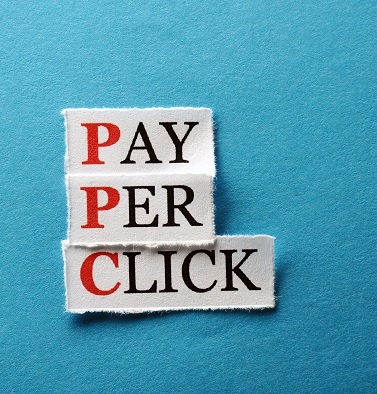
by Marelise da Silva | Apr 14, 2020 | Social Media Marketing
Social media can be used to improve customer service. It allows you to connect with customers on platforms where they spend their time. People are using social media platforms to engage with brands and, therefore, expect some level of customer service support via these platforms. Use these eight great tips to improve your customer service levels on social media.
Tip 1: Respond Faster
Integrate customer service platforms to turn social media posts, messages and tweets into tickets. Give the highest priority to technical problems, complaints and product issues.
Tip 2: Be Proactive
Continue to build a relationship with your customers and send them regular updates of new offers, discounts, services, changes in pricing plans and other helpful information.
Tip 3: Personalise Services
Don’t give generic responses. Make customer service interaction human and personable, not robotic and automated as if your customer is not worth making an effort.
Tip 4: Empathise With Customers
Understand the customer’s purpose, detect their tone of voice and use the collated information to reply with empathy.
Tip 5: Don’t Always Auto-Respond
A generic auto-response reduces the relationship built through personalisation. Rather, strive to create different auto-respond templates for common inquiries.
Tip 6: Keep to the Right Channel
Be available to your customers on the right social media channels and address their needs appropriately. For example, on LinkedIn, your approach will be more professional than Facebook.
Tip 7: Use a Different Channel
Transfer social media conversations that might include sensitive customer information to other channels such as email or telephone. And, always maintain a helpful and friendly tone.
Tip 8: Be Consistent
Provide customers with the same quality customer service whether you are using social media, email or talking to them on the phone. Accuracy and professionalism not only build, but also maintain good connections.
WSI OMS’s social media package helps you craft meaningful content, create a buzz and connect with customers on the most relevant social media platforms. Contact us today and start a great customer service journey on social media.

by Marelise da Silva | Apr 6, 2020 | Link-building, SEO
Link building forms an integral part of a successful SEO strategy for any and every business out there. However, there is an art to getting it right and ensuring that the amount that you spend is worth every cent in the long run. Below are five great tips for improving your link building ROI going forward.
Keep an Eye out for Broken Links
Once you have created a number of positive backlinks to your company website, you should never just forget about them and continue creating more. It is essential for the stability of your rankings to keep checking to ensure that all of the created links are working properly. If you notice any broken links or links that are directing users to the incorrect web page, report them to the website owners or relevant webmasters and request that the issues be fixed. And, there is no need to track links manually, either. Majestic is a wonderful tool to use.
Use Competitors’ Links to Your Advantage
Not sure what direction to take when it comes to content marketing and creating new content? Dive into your competitors’ high-performing links, with the help of tools such as Ahrefs, and incorporate them as citations in a new article.
Get Important Sites Involved in Your Link Building Strategy
Has one of your competitors managed to create backlinks via a reputable website that is not currently linking back to your company website? Get busy creating a relationship with the site and crafting content that will earn you a backlink, too.
Create Guest Posts
There are many websites out there that will accept guest posts from businesses. Sometimes they charge a fee to publish the post containing your link, but many will publish for free if the content provided is exciting enough (and not promotional in nature).
Turn Mentions Into Backlinks
Use a tool like LinkResearchTools to discover your brand’s various mentions from around the web. Then contact each relevant webmaster to request that the mention is turned into a backlink.
Here at WSI OMS, we are a digital marketing agency that is fully equipped to help you maximise your link building, social media marketing and SEO strategy. Contact us today.

by Marelise da Silva | Mar 26, 2020 | SEO
Don’t be fooled into thinking that you can play fast and loose with SEO services. You need to monitor your performance if you really want to get a grasp on what is working and what is a waste of time and money. There are a variety of tools that can help you to optimise the process, and the good news is that many of these tools are free and easy to use. Here are three of our favourite tools that are also available to you and your organization, as well as the reasons why you should be using them to your advantage.
1. Track Backlinks With Open Site Explorer
This tool is your go-to when it comes to keeping track of your website’s backlinks, which is an imperative part of SEO. Every business should have a decent mixture of follow and no-follow links, as well as anchor texts and links to your website from other websites in order to make a difference in your rankings. Open Site Explorer provides information regarding your website’s domain authority, along with the number of backlinks that your website has accumulated and where they come from. It also offers advice regarding link building opportunities going forward.
2. Keep an Eye on Your Bounce Rate With Crazy Egg
Did you know that your bounce rate has a tremendous effect on the way in which Google recognizes your page? A website with a high bounce rate will notice a knock in its rankings over time. Crazy Egg has been designed to help you keep track of this bounce rate and user behavior on your site in general. It is essentially a heat-mapping tool which shows you exactly how far people are scrolling down on a page, how long they are spending reading what content and where they are clicking. This gives you a good idea of where to spend most of your time making improvements in order to maximize user experience and, ultimately, boost SEO optimization.
3. Identify Poor Performance With Screaming Frog
When it comes to the technical elements of your website, such as response codes and missing image alt text, Screaming Frog is your best friend. With this tool in your corner, you’ll know exactly how well (or how poorly) your site is performing from a technical SEO perspective. The tool will also provide helpful advice in terms of how to go about fixing various issues.
Feeling out of sorts when it comes to SEO? Contact WSI OMS today for SEO services that deliver measurable and understandable results for your website ranking.
by Marelise da Silva | Mar 20, 2020 | E-mail Marketing
If you have an email marketing strategy, then you’re already ahead of many businesses. However, if you don’t use KPIs, it’s nearly impossible to sustainably create successful email marketing campaigns.
The best KPIs to include in your email marketing strategy
1. Emails delivered
You could have 10,000 email addresses on your email list, but if only 1,000 emails get delivered, your strategy isn’t very effective. Alternatively, keeping an eye on your email delivery rate can tell you whether a certain server- such as gmail- develops a problem with your email address.
2. Emails opened
If your emails aren’t being opened, then no one is reading your content and- more importantly- no one is responding to your brand.
3. Click-to-open rate
This metric compares how many people opened your email to how many people clicked on a link in said email. The CTO rate can tell you if both your subject link and your link were effective.
4. Unsubscribe rate
If you notice significant changes to your unsubscribe rate, it means that some change you made to your email marketing strategy didn’t go over well with your audience.
5. Conversion rate
This metric is often hailed as the most valuable KPI. It measures how many people open your email, click on a link and take a specific action. The action is typically related to your CTA, such as downloading a resource, “liking” your social media page or making a purchase.
6. List growth rate
When your email list is growing at a healthy rate, you know that part of your email marketing campaign is working.
7. Sharing rate
When email recipients hit “share,” it means you’re producing quality content.
Having an effective email marketing strategy is crucial to the success of your inbound marketing efforts. If you don’t know how to create a successful strategy and track key KPIs, don’t worry. That’s what digital marketing agencies are here for! Contact us today to learn how we can help.

by Marelise da Silva | Mar 20, 2020 | PPC
Pay per click campaigns are an important part of your digital marketing strategy. So, if your campaigns are not converting, you need to understand why. Here are three key reasons why your campaign might be getting a low click to convert ratio.
Your Campaign Manager’s Experience
As a digital marketing agency that manages everything from retargeting strategies to Facebook ads, we have found the most common reasons why PPC campaigns do not work is because the person managing the campaign doesn’t always know what they are doing. It’s true that Google AdWords has a lot of resources and that it is easy to set up a campaign yourself, but inexperienced people often miss big opportunities that could make a significant change in their PPC results.
Your Bidding Strategy Is Failing
Your bidding strategy may be off, meaning:
- That you might not be using native keywords,
- You are bidding too much,
- Your budget is too much,
- Your goals aren’t set or defined, and so on.
The people who manage the most successful campaigns are those who sit at a desk and work on PPC campaigns all day. They aren’t social media people, bloggers, strategists or involved in other aspects. PPC campaign management is a craft that is perfected over years.
Your Budget Is Too Small
Another reason why PPC campaigns don’t convert is that the budget isn’t big enough. If your competitor is spending R15 000-00 and you are spending R1 500-00, you might get a few of the leads, but not enough to make a difference. PPC is an auction system. It’s like eBay. If you bid R1-00 on an item and another person bids R5-00, eBay is going to give the item to the person who bid R5-00.
At WSI OMS we run PPC campaigns for clients in almost every industry you can imagine. For help with your PPC campaigns that convert, contact us for a consultation today.





